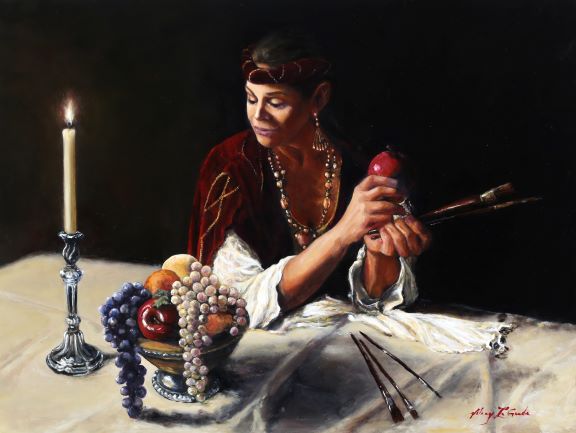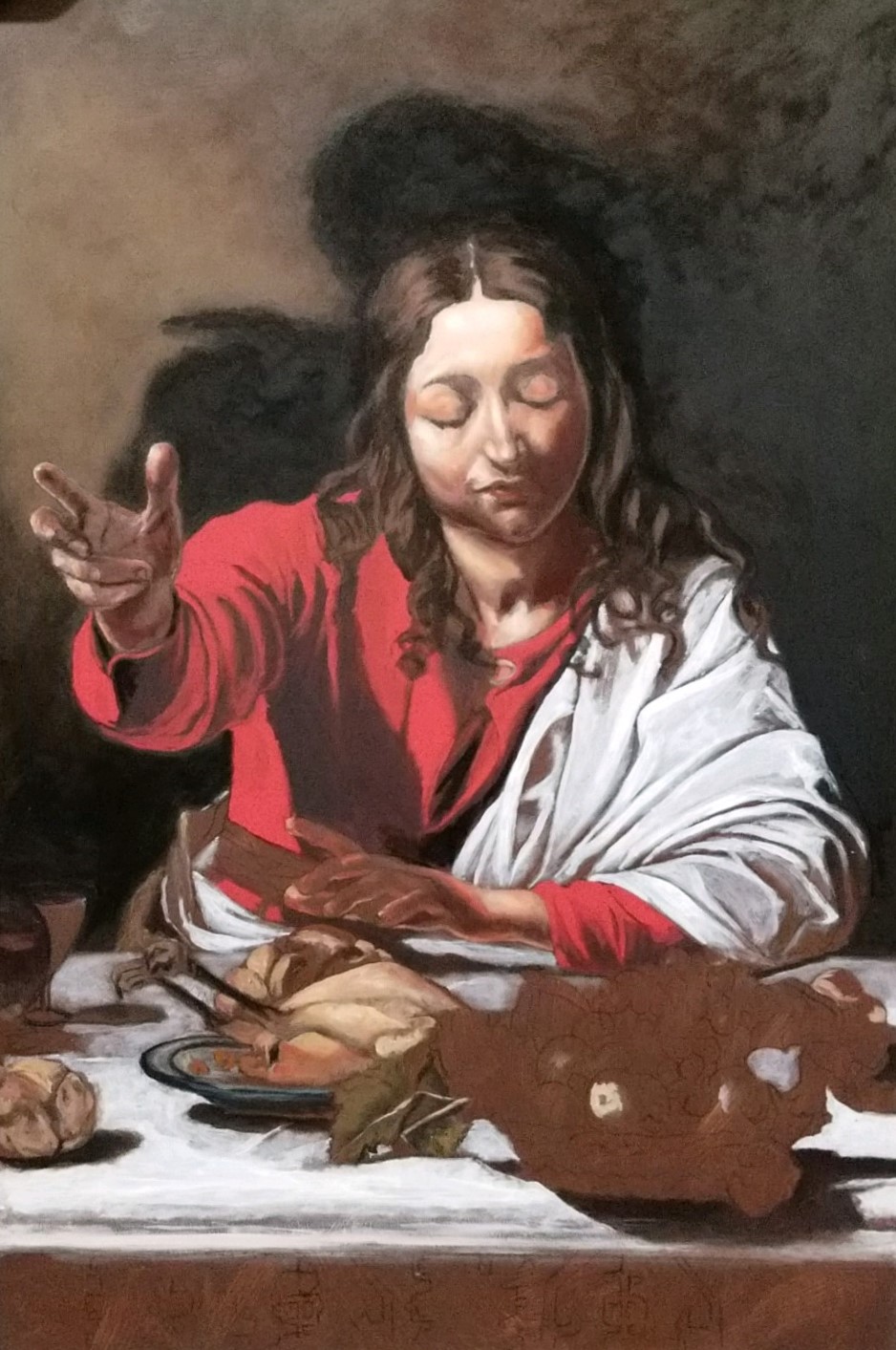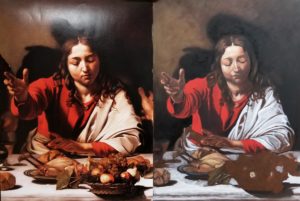Today we discussed lighting. When setting up a subject, it’s important to understand the direction of the lighting to identify the form, light, and shadow for purposes of painting that subject.
We learned about high light, mid light, drop light, cone shadow, and reflective light. One technique seems to work best. Use of a single light source is best for creating sound proportions and placement. For example, in order to show a nice silhouette form, you need certain types of lights and darks to outline the shapes and the shadows. That being said, the number one rule is to separate light from the shadow. This way, you can build a form in the right proportions in spaces between objects.
The number two rule is that all shadow edges get darker as you move away from the light source. You can see some of these lighting
principles in a crescent moon.
After today’s lecture, I resumed work on my beardless Jesus. I worked in the dead color stage. This is the process where details are ignored and the color values and tones of the paint are placed on the subject to create the dimensional illusion of the play between light and shadow.
Here’s a picture of today’s progress. It was a rainy day in Toronto so I skipped lunch and spent that extra time working on my painting. Time really flew by and before I knew it the cock crowed three times which meant I had to go back to the Old Mill Inn.
As you can see, more objects are identifiable in the painting such as the chicken, bread, fabrics, and hair. By using these lighting principles, I’m able to more closely refine my work. There’s a lot left to be done so don’t judge me!


